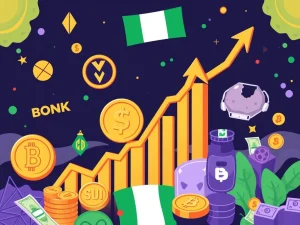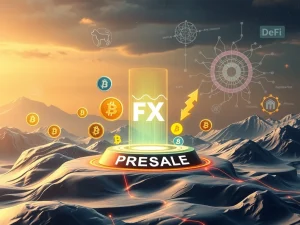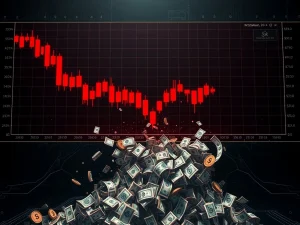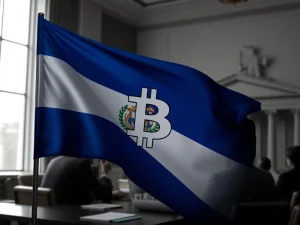XRP News: Devastating 12.22% Plunge Triggers Massive $112M Liquidations
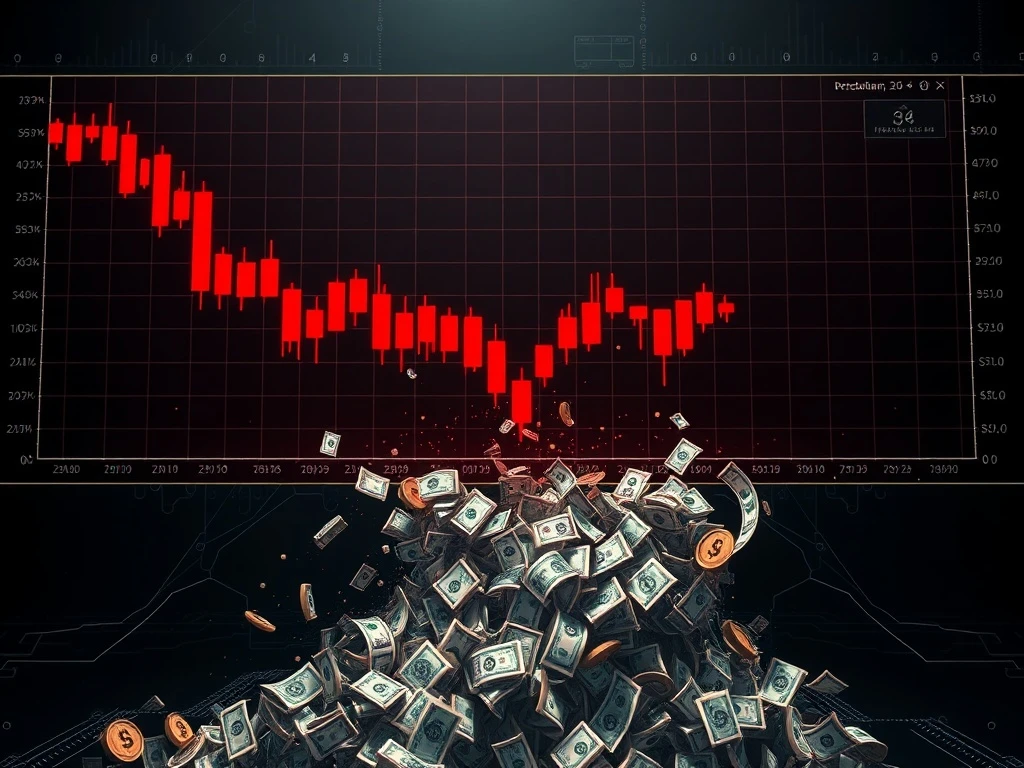
The world of cryptocurrency is no stranger to dramatic swings, but recent events surrounding XRP have sent shockwaves through the market. If you’ve been following the latest XRP News, you’re likely aware of the sudden and significant downturn that caught many investors off guard. This article delves deep into the factors behind XRP’s recent volatility, from major institutional movements to cascading liquidations, offering a comprehensive look at what happened and what it means for the future of this prominent digital asset.
The Shocking XRP Price Plunge: A Deep Dive
Late July 2025 witnessed a pronounced period of volatility for XRP, a digital asset that had recently surged to multi-year highs. However, this bullish momentum was abruptly halted by a sharp single-day decline of 12.22%, pushing its price down to $3.04. This dramatic sell-off wasn’t just another market correction; it marked the largest single-day decline for XRP in 2025, leaving many investors reeling and prompting urgent questions about the underlying causes.
Several critical factors converged to create this perfect storm:
-
Massive Token Transfer: A substantial $175 million transfer originated from the wallet of Ripple co-founder Chris Larsen. Such a large movement from a prominent figure often signals a potential sell-off, creating immediate FUD (Fear, Uncertainty, Doubt) in the market.
-
New Project Announcement: Brazil-based VERT announced a significant $130 million tokenization project on the XRP Ledger. While seemingly positive for the ecosystem, the market’s initial reaction suggested concerns about how this might impact the direct demand for the XRP token itself, or if it introduced a new variable into the supply-demand equation.
-
Leveraged Positions: The rapid price drop triggered widespread liquidations across major exchanges, exacerbating the downward pressure as automated systems sold off assets to cover margin calls.
Understanding the XRP Liquidations Cascade
The immediate consequence of XRP’s sharp decline was a massive wave of liquidations, particularly impacting long positions—bets that the price would go up. These liquidations, totaling an estimated $112 million, acted as a powerful feedback loop, driving the price down further as more and more leveraged positions were forcibly closed.
Key figures from the liquidation event:
-
Upbit: One of the exchanges heavily affected, witnessing significant long-position losses.
-
AInvest: Reported a staggering $89 million in long-position losses, highlighting the extent of the leveraged exposure in the market.
-
CoinGape: Cited the overall $112 million in losses, underscoring the collective impact on traders.
-
Phemex: Labeled this event the ‘largest long squeeze of 2025,’ noting an astonishing $81.7 million in XRP futures liquidations within a mere 24 hours. This massive squeeze was accompanied by a 149.8% surge in trading volume, indicating frantic market activity as traders scrambled to adjust their positions.
A ‘long squeeze’ occurs when a rapidly falling asset price forces traders with leveraged long positions to close their trades, often leading to a cascade of selling that further depresses the price. This event vividly demonstrated XRP’s heightened sensitivity to on-chain activity and broader macro-level sentiment, especially when coupled with high leverage.
The Chris Larsen Factor: What Does a $175M Sale Mean?
The timing of Ripple co-founder Chris Larsen’s $175 million token transfer was particularly impactful. While the exact purpose of the transfer (whether it was a sale, a transfer to another wallet, or for a specific project) was not immediately clear, the market interpreted it as a significant sell-off. Such large movements from key figures, often referred to as ‘whale movements,’ can trigger considerable market anxiety due to the potential for increased supply hitting the market.
In this instance, analysts quickly attributed part of the volatility to Larsen’s token offload, raising concerns about potential oversupply at a time when market sentiment was already fragile. While Ripple’s leadership, including CEO Brad Garlinghouse and CTO David Schwartz, remained notably silent on the market turmoil—with Schwartz reportedly focusing on protocol improvements—their silence perhaps amplified the uncertainty for some investors.
The fact that large investors had been accumulating XRP (280 million XRP and 310 million DOGE) earlier in July presents an interesting paradox. This accumulation signaled continued institutional interest even amidst market uncertainty, suggesting a divergence in strategy between long-term holders and short-term leveraged traders.
Navigating Crypto Market Volatility: Lessons Learned
This episode served as a stark reminder of the inherent volatility in cryptocurrency markets, especially for assets like XRP that are highly susceptible to both institutional activity and speculative trading. The price swings underscored several critical lessons for participants:
-
Leverage Risk: The scale of liquidations highlighted the extreme risks associated with highly leveraged positions. While leverage can amplify gains, it equally amplifies losses, leading to rapid capital depletion during sudden market downturns.
-
Whale Impact: Movements by large holders (whales) can significantly influence market dynamics. Monitoring on-chain data for large transfers can provide early indicators of potential shifts in supply or sentiment.
-
News Sensitivity: Cryptocurrency markets are highly sensitive to news, whether it’s a co-founder’s transaction or a new project announcement. The market’s interpretation of such news, even if initially positive, can lead to unpredictable reactions.
-
Interconnectedness: The fact that Ethereum and Bitcoin were also affected as traders adjusted positions demonstrates the interconnected nature of the crypto market. A major event in one asset can ripple through the entire ecosystem.
What’s Next for XRP?
Despite the severe sell-off, XRP’s price found brief support at $3.10 and showed resilience at $3.13, suggesting active buyer support at these levels. This indicates that while the short-term outlook was bearish due to liquidations, there’s underlying demand preventing a complete collapse.
The future trajectory of XRP hinges on several key variables:
-
Regulatory Clarity: The ongoing regulatory landscape, particularly in the U.S., remains a significant factor. Speculation from figures like Arthur Hayes, co-founder of BitMEX, suggests a potential 50-100% surge in XRP’s value if U.S. crypto legislation progresses favorably. However, this remains highly speculative.
-
VERT Project’s Impact: The $130 million allocated to VERT’s tokenization project on the XRP Ledger is a critical variable. Will this initiative genuinely drive demand for XRP or primarily utilize the ledger without directly boosting the token’s value? Clarity on this will be crucial.
-
Institutional Movements: Continued monitoring of large institutional token movements will be essential. While some whales accumulated, others may still be looking to offload.
On-chain data continues to indicate robust interest in XRP-related DeFi protocols and exchanges, reflecting a degree of technical strength and market confidence despite the recent turmoil. Comparative historical trends suggest that assets often find recovery paths following significant regulatory and ETF developments, offering a cautious glimmer of optimism for a potential rebound for XRP.
Conclusion: Navigating the Storm
The recent dramatic plunge in XRP’s price, fueled by Chris Larsen’s significant token transfer and a cascade of liquidations, serves as a powerful reminder of the dynamic and often unpredictable nature of the cryptocurrency market. While the immediate aftermath was challenging for many, the underlying resilience shown by XRP at key support levels and continued institutional interest offer a nuanced perspective. As the market digests these events, all eyes will remain on regulatory developments, the impact of new projects like VERT’s, and future institutional activity to determine XRP’s long-term direction. For investors, understanding these intertwined forces is paramount to navigating the exciting yet volatile world of digital assets.
Frequently Asked Questions (FAQs)
Q1: What caused XRP’s sudden 12.22% price drop?
A1: The sharp decline was primarily triggered by a $175 million token transfer from Ripple co-founder Chris Larsen’s wallet, coupled with a $130 million tokenization project announcement by Brazil’s VERT on the XRP Ledger. These events sparked market uncertainty and led to a massive wave of liquidations of leveraged long positions.
Q2: What are XRP liquidations and why are they significant?
A2: XRP liquidations refer to the forced closure of leveraged trading positions when the market moves against a trader’s bet, leading to significant losses. The $112 million in XRP liquidations, particularly the $81.7 million in futures liquidations on Phemex, amplified the price drop by creating a cascading sell-off as traders were forced to cover their margins.
Q3: How did Chris Larsen’s actions impact the XRP market?
A3: Chris Larsen’s $175 million token transfer from his wallet was perceived by the market as a potential large-scale sell-off. Such a significant movement from a co-founder can trigger fear and concern about increased supply, contributing to downward price pressure, regardless of the actual intent behind the transfer.
Q4: What is the significance of VERT’s $130 million tokenization project on the XRP Ledger?
A4: While tokenization projects on the XRP Ledger generally indicate ecosystem growth, the market’s reaction suggested some uncertainty regarding how this specific project would translate into direct demand for the XRP token itself. It introduced a new variable for investors to consider in the overall supply-demand dynamics.
Q5: Is XRP expected to recover after this plunge?
A5: Despite the significant drop, XRP showed resilience at key support levels ($3.10-$3.13), indicating active buyer interest. Its long-term recovery will largely depend on positive regulatory clarity, particularly in the U.S., the successful integration and impact of new projects like VERT’s, and future institutional investment trends. Historical data suggests recovery is possible after major market events.


